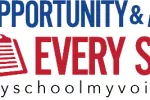
When Congress wrote Preschool Development Grants into the Every Student Succeeds Act (ESSA) they recognized the role high quality early childhood education plays in school success for the first time in the history of federal law designed to improve K-12 education for disadvantaged students. This once discretionary grant program is now a permanent fixture in American education.
Through a competitive grant process, the Preschool Development Grants provide funding to states to improve the access to and quality of programs for low income and disadvantaged children by promoting coordination and collaboration between existing early childhood programs and systems.
Administration
Grants are administered jointly by the Secretary of Health and Human Services and the Secretary of Education.
States Must Support a Mixed Delivery System
A mixed delivery system of early childhood education includes services offered through a variety of programs and providers such as Head Start, licensed family and center-based childcare, public schools, and community-based organizations supported with a combination of public and private funding.
Funding
Grants are awarded for a period of not more than one year and may be renewed for a period of not more than three years. Each state receiving a grant must provide funds from non-federal sources to carry out activities of not less than 30 percent of the amount of the grant.
Use of Funds
Funds can be used for four types of activities:
- Conducting periodic statewide needs assessments of the quality and availability of existing programs
- Developing a strategic plan for collaboration, coordination, and quality improvements among existing programs and state and local agencies
- Providing parents with information about the variety of early childhood programs within the state’s mixed-delivery system
- Sharing best practices among early childhood education program providers
After priorities (1) and (2) have been completed, funds may be used to improve professional development for early childhood providers or develop new programs for children and families eligible for but not served existing programs
Downloads
Are you an affiliate?

